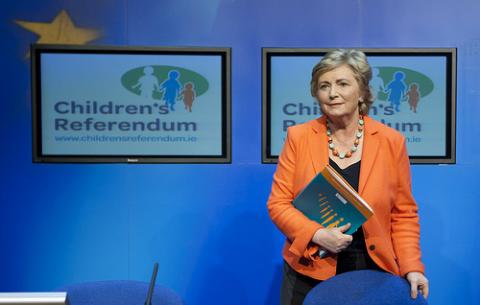Constitutional amendment on children's rights deficient in many ways

Forty-six years ago (in 1966) three High Court judges adjudicated in a case where a child, born to unmarried parents, was adopted. Subsequently the natural parents married each other and made an application to have their child returned to them, after it was found that the adoption order concerning their child had been invalid.
By this time the child was aged 17 months and had bonded securely with his/her adopted parents and, aside from that, concerns were raised about the capacity of the natural mother to parent the child adequately.
Nevertheless, the court found: “It would be impossible to give effect to the parents’ (constitutional) rights and duty of education, if they are not given custody of the child”, and the only circumstances in which this right and duty could be supplanted were exceptional cases “where the parents for physical or moral reasons fail in their duty towards their children”. The court ordered the return of the child to the natural parents.
In a 1985 case (JH) in the High Court, the judge, Kevin Lynch, held, after hearing evidence from psychiatrists in a case where the natural parents had married after a child of theirs had been placed for adoption: “I am satisfied there is an appreciable risk of long-term psychological harm to the child by [... a] transfer of custody.” He refused an application for an order to transfer the custody to the natural parents.
The Supreme Court overturned his decision. It found it was not a question of the welfare of the child being the primary concern. “A child of over two years of age, as this infant is, in the dominant or general custody of persons, other than its parents, and continuing in such custody against the wishes of its parents, cannot be said to enjoy the right of education by its family.”
Most of us would have thought this predominance given to the family, over the welfare of the child, was indefensible and that a constitutional amendment was necessary.
But in a 2006 case, known as the Baby Ann case, Hugh Geoghegan, now retired, delivered a unanimous view of the Supreme Court (the other judges were John Murray, Catherine McGuinness, Adrian Hardiman and Niall Fennelly) which, in my opinion, raised a new set of concerns that may require another remedy entirely.
A child was born to university students and subsequently placed for adoption, with caring and devoted would-be adoptive parents. Subsequently the university students married, which meant an adoption could not take place under the present law. The natural parents sought the return of the child.
In the High Court, in this case, three psychologists gave evidence. The High Court judge, John MacMenamin, on hearing the psychologists, thought the balance of evidence was against transferring custody because of the possible psychological damage this would do to the child. All three psychologists, however, agreed that the damage to the child could be mitigated were it possible to have a phased, amicable transfer over a period.
John MacMenamin decided the child should remain with the would-be adoptive parents.
The Supreme Court found he was wrong – not just because of the constitutional imperatives to do with the family, or even, it seems, primarily because of the constitutional issue, but because of what might be termed a “gut” instinct that children were always better off with their natural parents than with adoptive parents, even though, in this instance, the balance of psychological evidence was to the contrary.
Unusually, the Supreme Court went behind the findings of fact of the trial judge and the evidence given in the High Court and substituted its own judgment on that evidence, relying, it seems, in part on the conclusion that “many people” would “consider that there is an appreciable advantage for a child to be reared within a natural family and having real parents and real aunts and uncles”. Why is it relevant in a legal judgment what “many people” think?
The Supreme Court also made a finding on the evidence that the would-be adoptive parents and the natural parents would be able to handle a sensitive transfer. How was it in a position to make such a determination over the head of the judge who had heard the evidence and observed the witnesses? More disconcerting was the apparent reliance on other considerations: the fact that the natural parents were “well established” and “professional people”.
The judges unanimously ordered the return of the child to the natural parents, apparently, on the basis, primarily, of the welfare of the child.
We now have proposed constitutional amendment that seeks, among other objectives, to rectify the existing paramount weight of the “family” above the interests of the child. It states: “Provision shall be made by law that in the resolution of all proceedings – (ii) concerning the adoption, guardianship or custody of, or access to, any child, the best interests of the child shall be the paramount consideration.”
But how does that deal with the 2006 Supreme Court finding that the paramount interest of the child is to be in the care of their natural parents, because this is what “many people” think, independent of the burden of psychological evidence in a case?
And how are the class and social standing of the natural parents relevant? There is much else deficient about this constitutional amendment, to which I hope to return.
